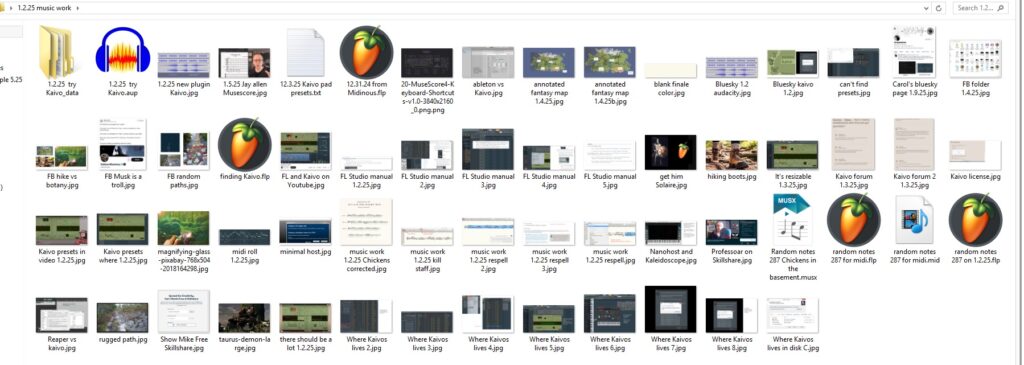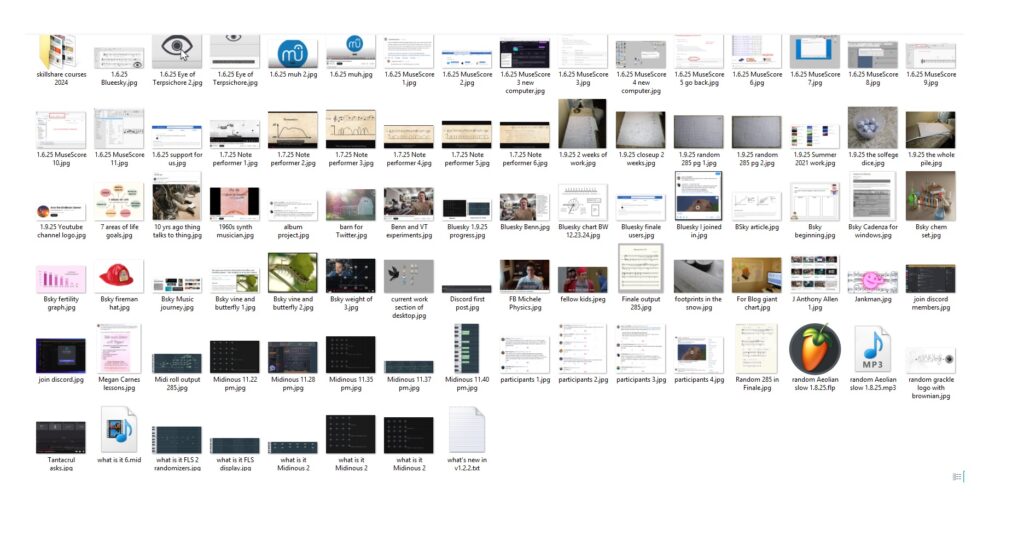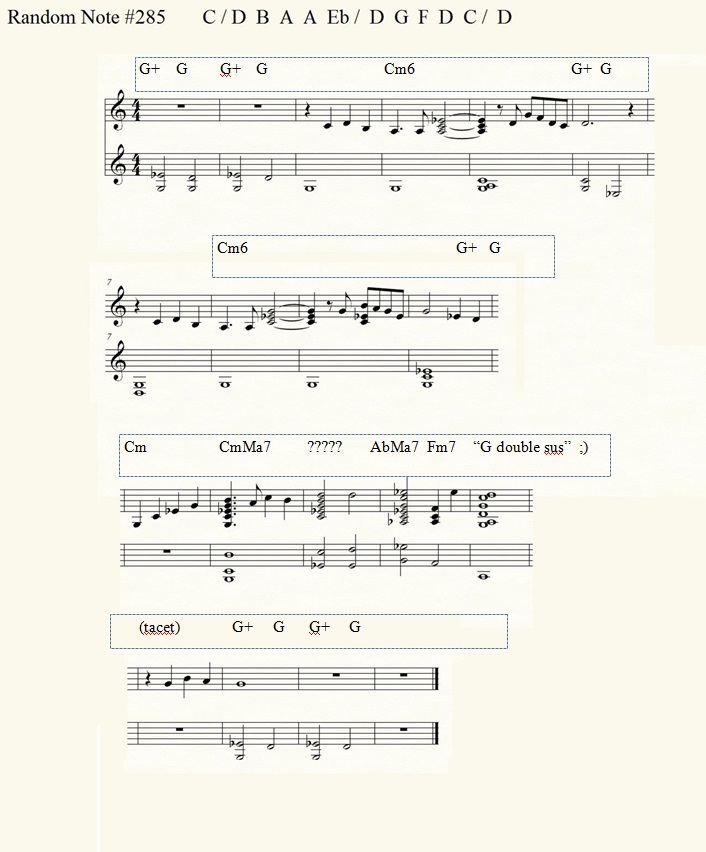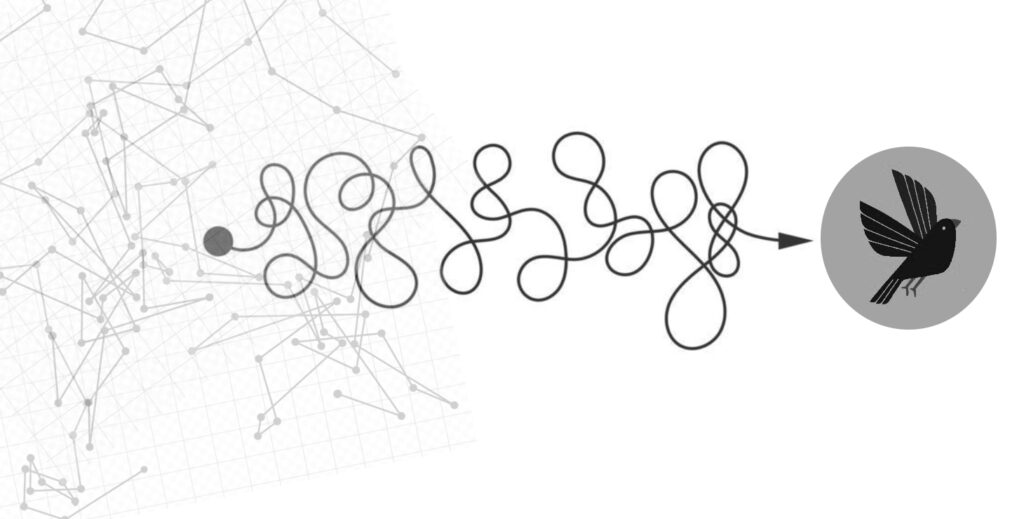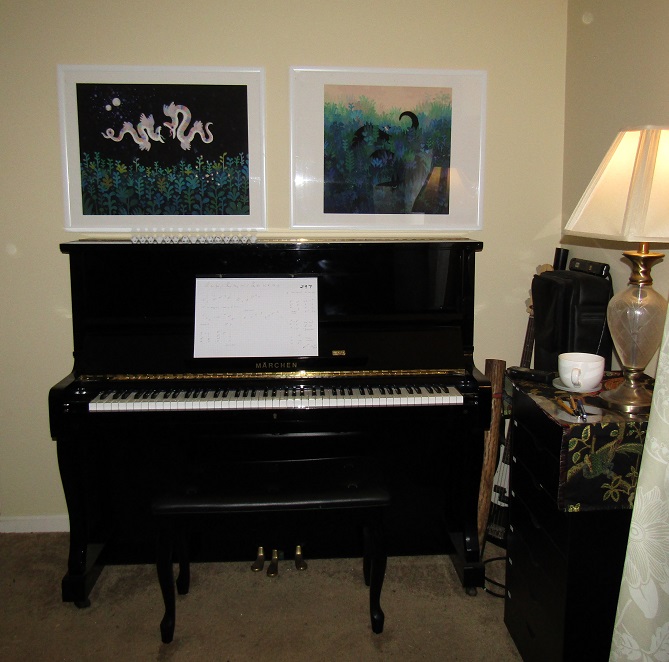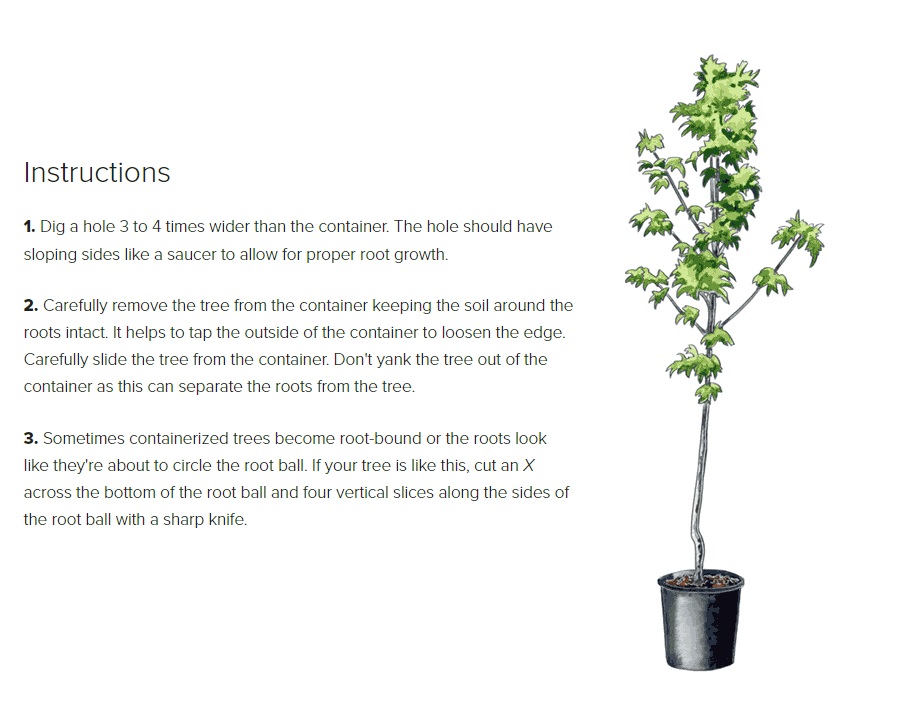Several years ago I had music lessons (via Zoom) with a friend whom I had met at the community college. We started out working on music theory, and I sent him long pdf documents describing what I had worked on. During the summer of 2021 I said “OK, I’m going to finish the rough draft of my Planet project before you go back to college; I’ll post progress videos!” That worked really well. I can think of several times I was trying to meet a deadline and had to abandon something that wasn’t working, and try a different approach. The time constraints forced me to be creative in different ways. My tutor was very helpful. He had a welcoming, curious attitude towards my work. I appreciated his feedback, although sometimes I ‘appreciated’ it by taking the exact opposite of his advice. His feedback helped me to clarify what I was hoping to accomplish with each section of the music.
Here’s that summer’s work.

After 2021 there was a period of time where it was hard to work on music. We were packing up the house to get ready to move, and I spent hours searching for a new home. Moving took place Summer 2022. Dad died that fall, Mom died 6 months later. Summer 2023 was spent planting the young trees we had brought over from the old house. Christmas 2023 we had a flood in the basement which catalyzed the decision to have a barn built. The barn was conceived that spring and born in late August.
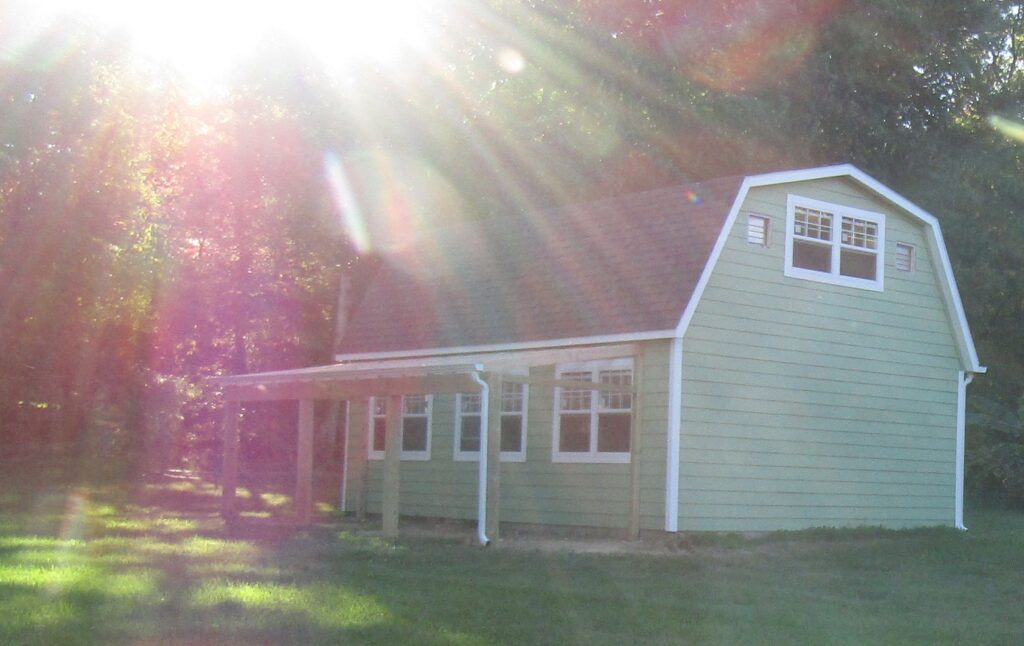
During the Spring of 2024, I felt like I had enough brain cells left over to start a new music project. The goal was, every morning I would toss 15 dice, and then create something using those notes. Three of the dice are blank, and 12 have the chromatic solfege syllables written on them.
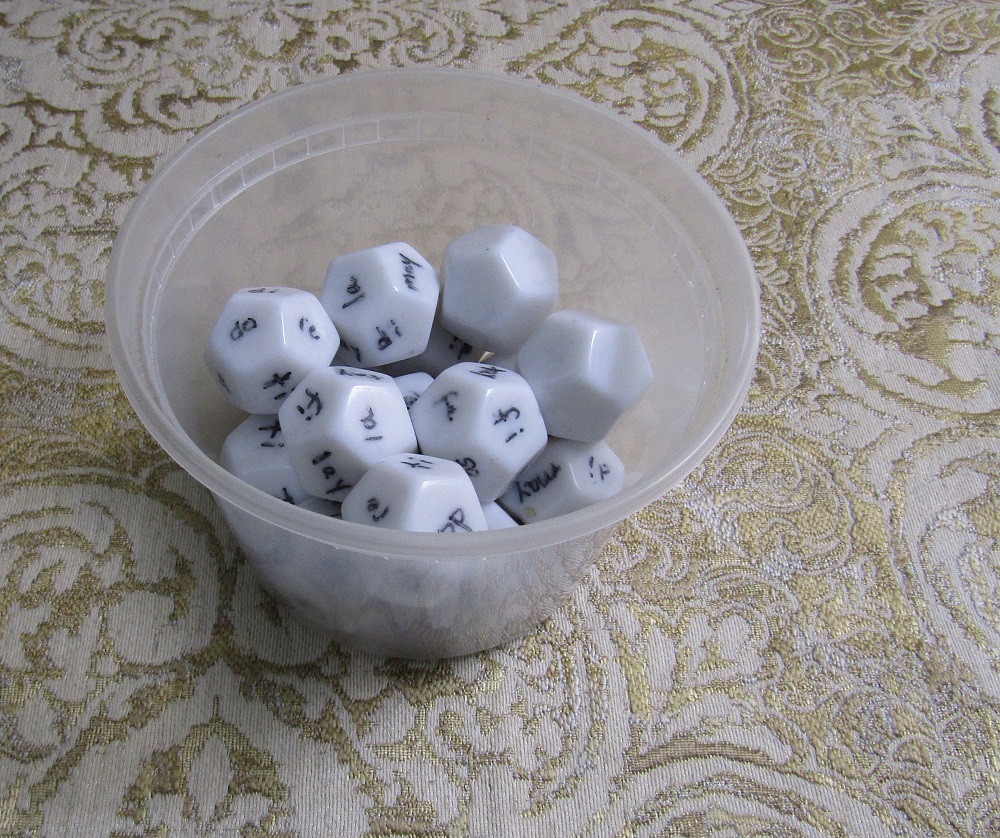
Music notation is still very awkward for me, so I write music down in a kind of hybrid notation on giant sheets of graph paper. Here’s the accumulated work so far!

And here’s the work for the past 2 weeks
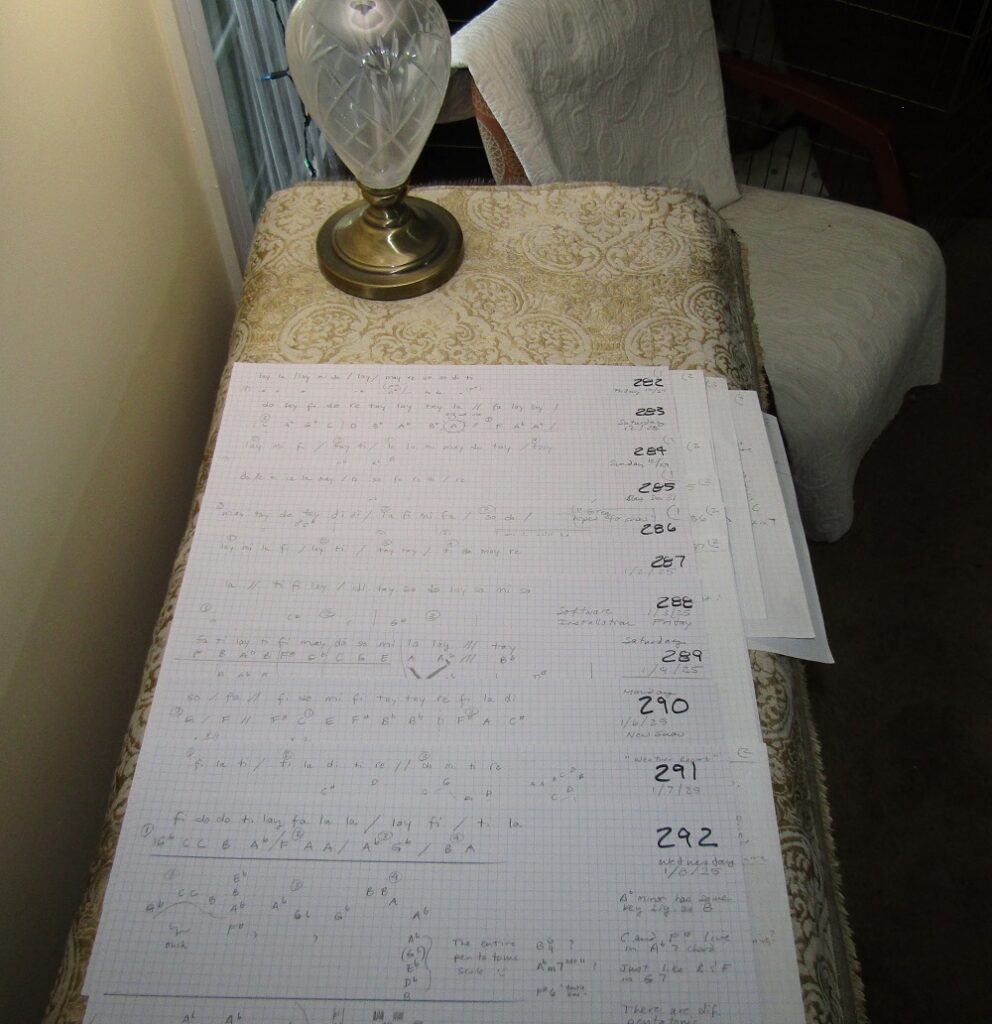
It’s compositions 282 through 292. In 2 weeks that’s 11 compositions and 20 pages!
Another idea I had was to go back to Skillshare and see how many classes were available that were taught by my favorite instructor, Jay Allen. I’ve watched many of them already, but I was feeling completionist and wanted to march my way through all those classes, taking notes.
Here’s page 1 of the classes he has available — there’s a total of 9 pages!
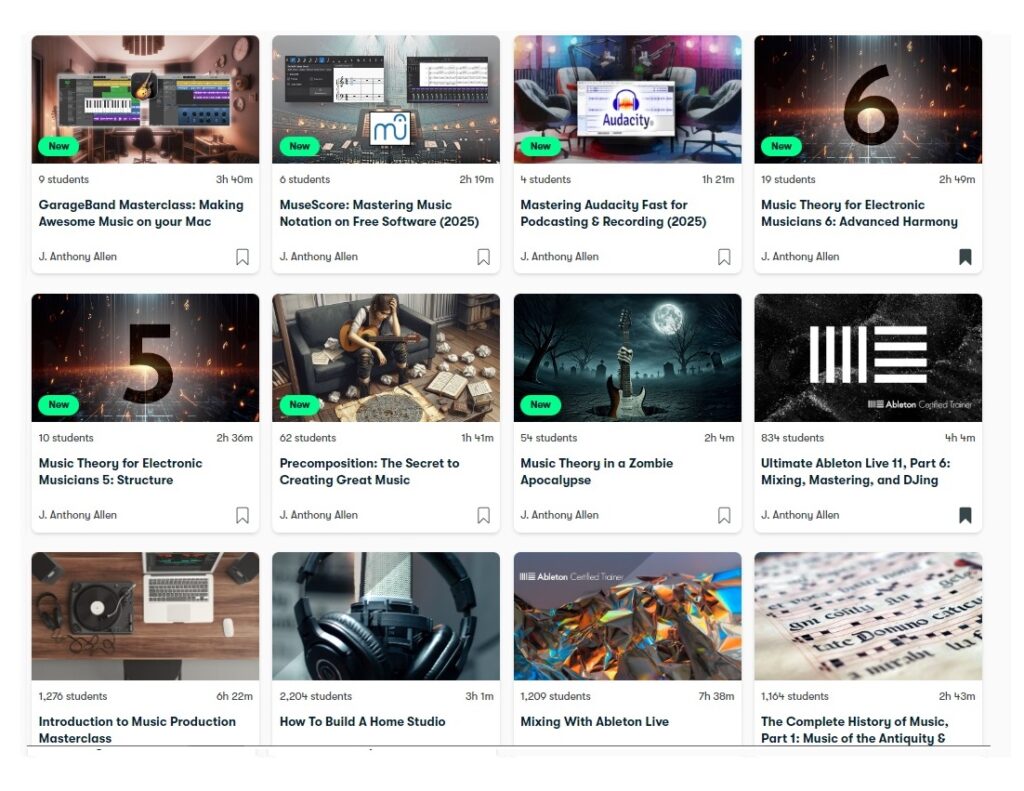
The first class I started listening to was one of Jay’s new ones, called “Precomposition: The Secret to Creating Great Music”. It was great to be ‘hanging out’ with Jay again — he’s so chill — the Bob Ross of music theory. Apparently it was a good video to start with, because it started a whole wave of creativity. Because of Jay’s class, I realized that I really wanted to finish my Planet Project. Meanwhile in December, many creative people I follow on Bluesky were posting their “projects of the year”. It was so inspiring to see the results of their persistence. I posted on Bluesky that I wanted to do something similar in 2025. To represent the project in visual form, I created a giant chart
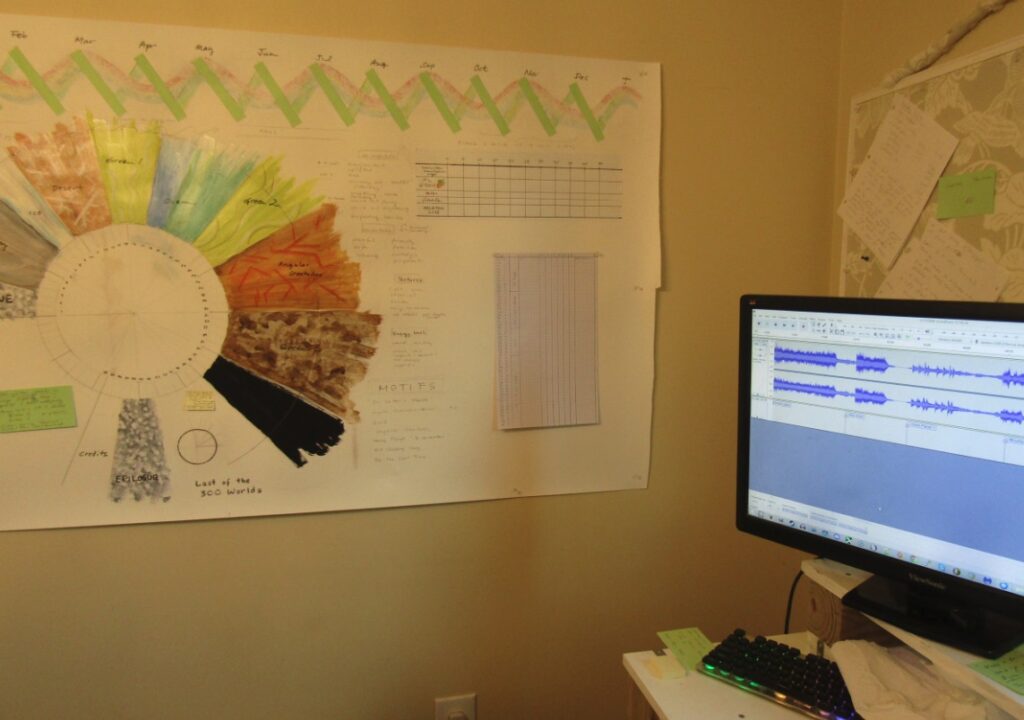
Here’s a schematic of it

The chart is a place where I can work on many of the things Jay Allen talks about in his Precomposition course, and also helps me keep on track with deadlines.
I talked to my tutor about setting up lessons again. I’m concerned about inundating him with writing the way I did in our lessons several years ago. He teaches at a public school now and his time is limited. I told him that I would hand in 2 written pages and 2 mp3s per lesson, and it would be great if the deadline was on Saturdays at noon — though we can have the online lesson whenever best fits his schedule.
I started work 2 weeks ago and realized that if my turn-in time is Saturday at noon, I sure don’t want to be up at 2 am Friday night pulling things together. So here I am on a Thursday afternoon figuring out what to say for the turn-in date.


